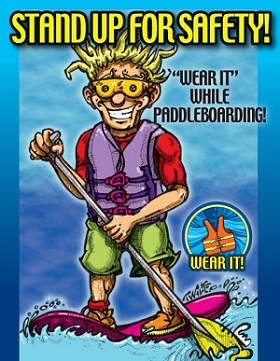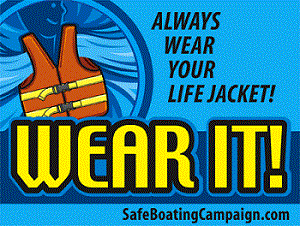Stand-up PaddleBoarding
Top 10 tips for stand-up paddleboarding
Posted by LT Stephanie Young

Stand-up paddle-boarding has burst onto the beach scene in recent years and is the fastest growing water sport in the world.
With the rise in popularity, many paddle-boarders often forget that being on a paddleboard requires the same safety precautions and vigilance as any other activity on the water. With National Safe Boating Week underway, now is a perfect time to brush up on some paddle-boarding tips and most importantly, water safety practices.
The first thing to know about stand-up paddle-boarding is that a paddleboard is a vessel when used “beyond the narrow limits of a swimming, surfing or bathing area.” If a paddleboard is used within a designated “swimming, surfing or bathing area,” the Coast Guard does not consider it to be a vessel.
What does this mean for you? When using a paddleboard beyond the limits of the swimming, surfing or bathing area, you need to be as prepared as you would be when using what is considered a traditional vessel, which includes wearing a life jacket.
Whether you are a seasoned paddle-boarder or new to the activity, here are some other tips when it comes to using stand-up paddleboards.
- Wear a life jacket and carry a whistle
- Be a competent swimmer
- Know how to self-rescue
- Know how to tow another board
- Know the local regulations and navigation rules
- Understand the elements and hazards – winds, tidal ranges, current, terrain
- Know when to wear a leash
- Be defensive – don’t go where you aren’t supposed to be and avoid other swimmers, boaters, paddleboards
- Use proper blade angle to be the most efficient paddle boarder
- Take a safety course
